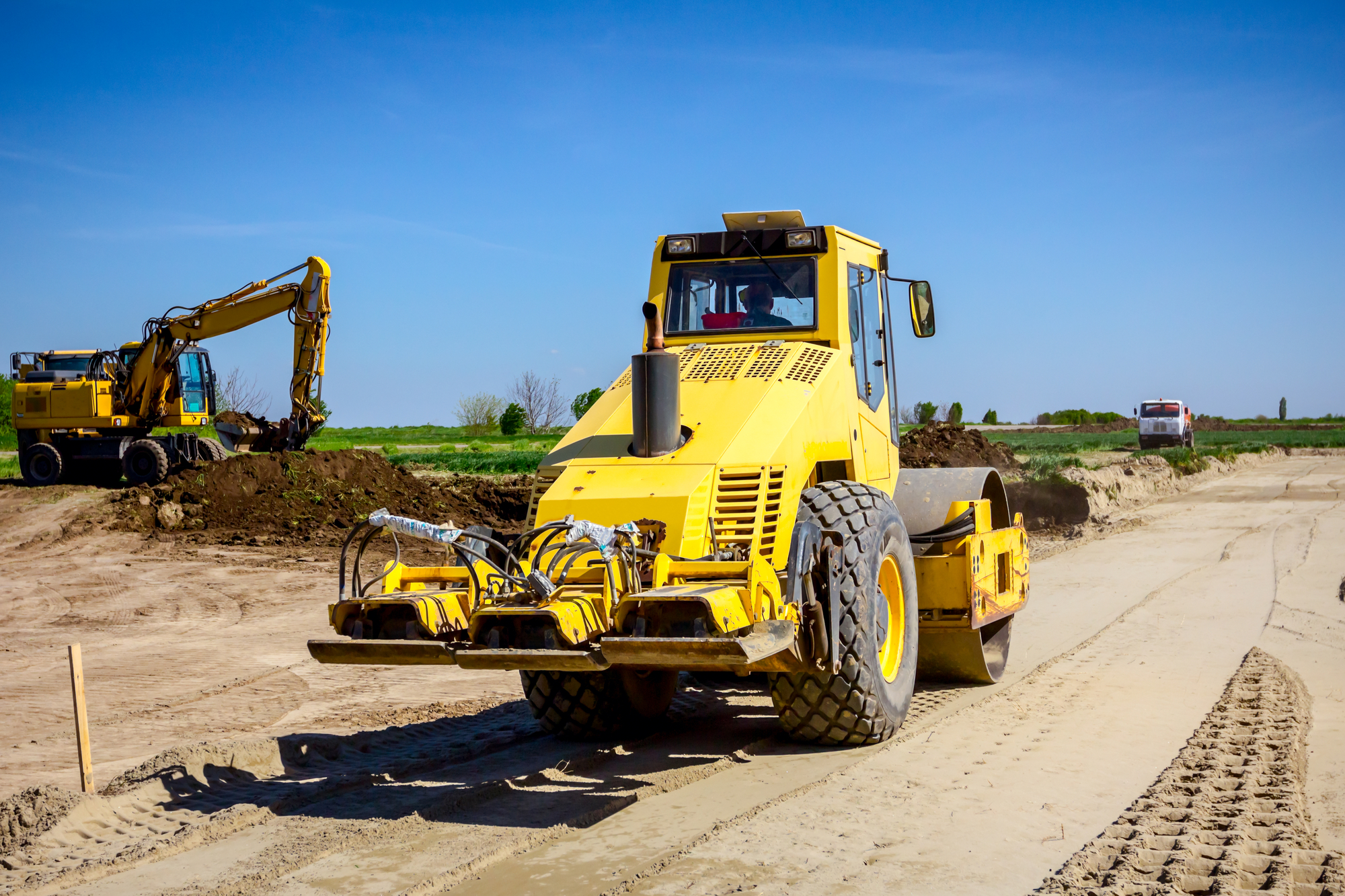In earlier times construction and embankment design were not given enough attention, resulting in embankments being left for compaction naturally. Because the older versions do not support heavier axle loads, it is necessary to now use a high degree of sub-grade support to create heavy and fast compaction. This form of compaction must be performed by suitable compacting equipment. Compaction or the densification of soil creates an all-around improvement of soil properties and how it performs as a pavement support bed. This process increases the density of the soil through mechanical means when packing the soil particles closer together and reducing air voids. The reduction of air voids through packing obtains a homogeneous soil mass that has much better properties. So what are the methods of compaction?
Methods of Compaction
There are different methods and machinery used in the process of compaction.
Smooth Wheeled Roller
The smooth-wheel roller typically has three wheels, with one small in the front and two large in the rear part. This machine is operated with an internal combustion engine. Another version of this machine is the smooth wheel roller, or tandem smooth wheel roller. This version has two drums with one in the rear and the other at the front.
The smooth-wheeled rollers are suited for sealing surfaces of the fill at the end of the day and give a smooth surface that can quickly drain rainwater. These machines are not suitable for deep layers of soil such as silty sands or uniform sands. They do not work well for deep layers because their compaction pressures are low. They will also cause stratification in deep layers because of the non-uniform compaction.
The smooth wheeled roller is best used to compact coarse, well-graded soils that are used in the base course of highways and non-plastic fine-grained soils.
Vibratory Rollers
The vibratory rollers are mounted on a drum. The rollers come in both smooth wheel and pneumatic tired types.
In the smooth wheel type, there is a separate motor that drives an assortment of eccentric weights to create low amplitude, high frequency with up and down oscillations of the drum. The smooth wheel vibratory roller is good for compacting granular soils where there are no layers up to 1m in thickness. If the soil has appreciable fines, the thickness will have to be reduced.
With the pneumatic type of roller, there is a separate vibrating unit attached to the wheel axle. The ballast box is suspended separately, away from the axle, so it will not vibrate. The pneumatic tired vibratory roller is good for compacting granular soils where the thickness is about 30cm. This form of roller can compact granular soil to an extremely high maximum dry density.
Sheep Root Roller
The sheep root roller’s name is derived from ancient times when a flock of sheep was used to compact new-formed fill. This roller type is much like the smooth wheel roller. The difference between the two is the sheep root roller contains numerous projecting feet from 200mm to 250mm long and an end area from 40 to 65cm. The wheels on this roller have hollow drums and can be filled with ballasts and water to make them heavier. The drums are installed on a steel frame.
The pressure imposed by the sheep root roller is from 7 to 42kg/cm. The sheep root roller is good for nonplastic and plastic, fine-grained soil, and coarse-grained soils that are more than twenty percent fine.
Impact Rammers
The impact rammer compacts the ground through impact force to compress it. The rammer will lift its foot off the ground and slam it back down. This force creates deeper compaction depths which work ideal in tight spaces such as trenches.
Because of the impact runner’s design, these machines are most often used in hard-to-reach places where other compactors might struggle. They are easily maneuvered and cover ground without much difficulty.
Vibrating Plates
With vibrating plates, several small plates vibrate by a separate vibrating unit. There are hand-operated models available of vibrating plates and are good for compacting soils having a small thickness.
The primary use for these units is to compact granular base course for runways and highways where the thickness is small and contains up to twelve percent fines.
Where to Learn More About Methods of Compaction
Construction Technology Partners specialize in new and emerging construction technology and we are here to help you grow your business by driving productivity. We will help you get the most out of your technology investment through site set-ups, data solutions, training, and we are your one-stop shop for machines. If you have questions on compaction, call our office and talk to one of our experts, we are here to answer all your construction needs.

